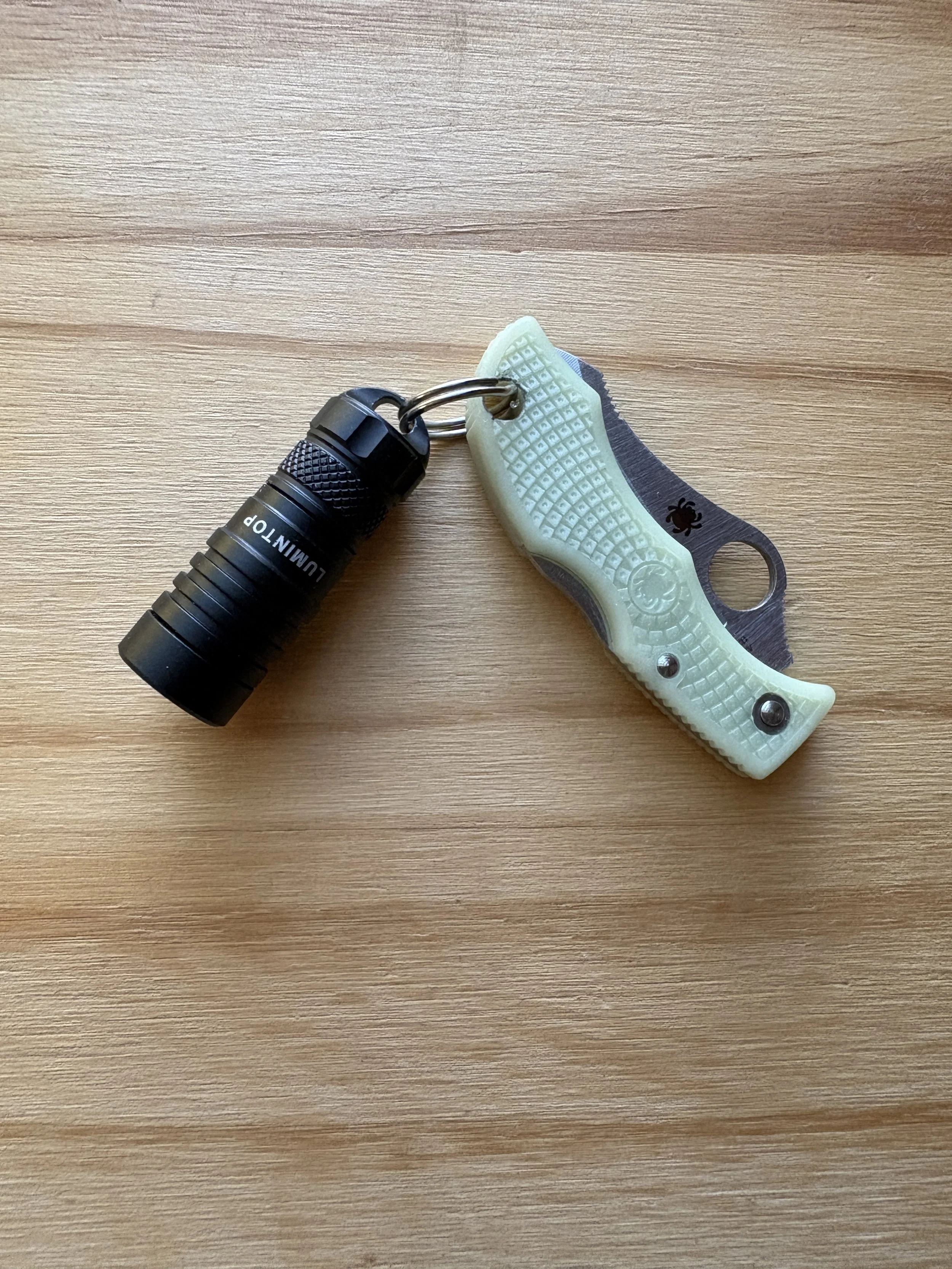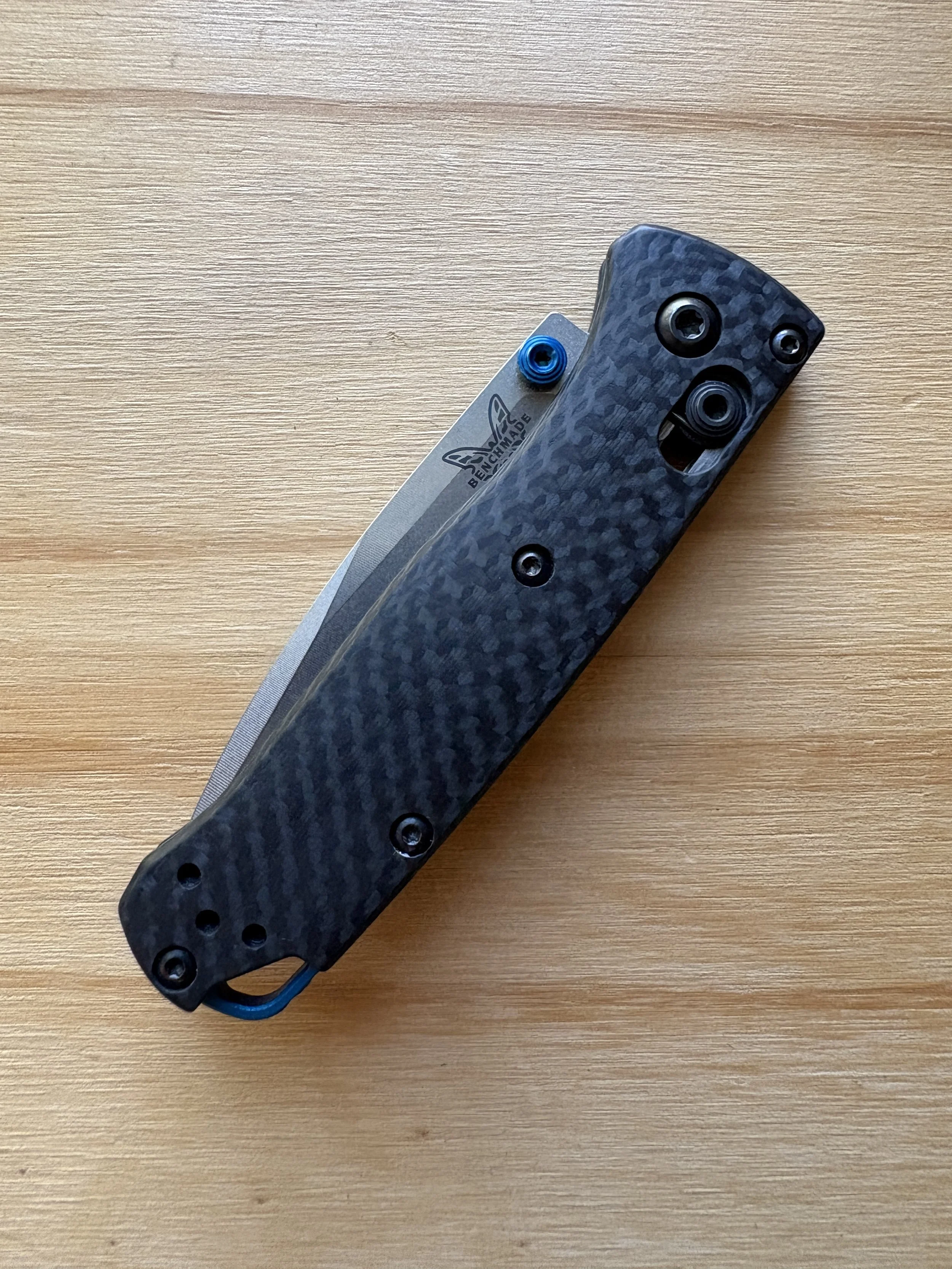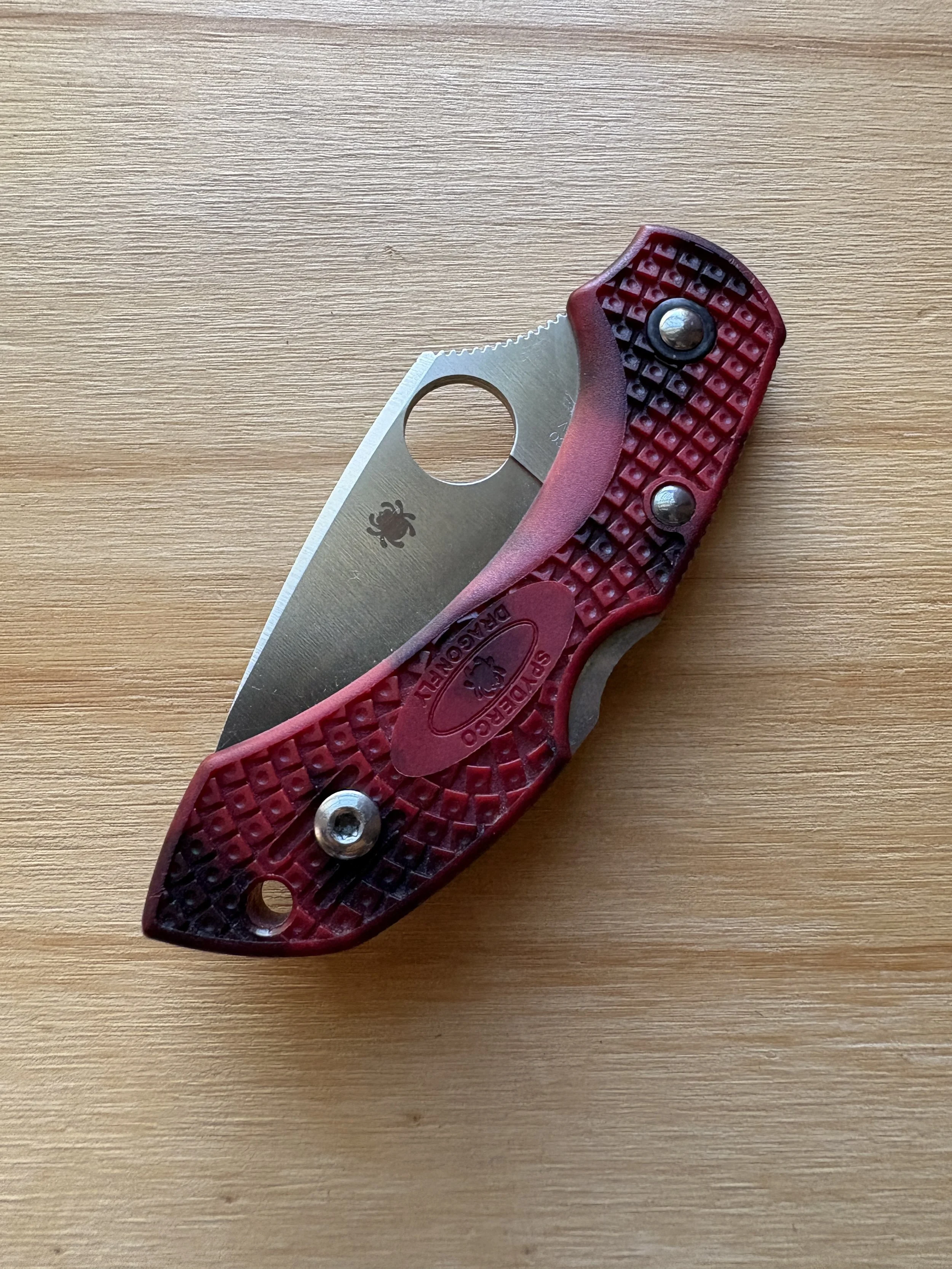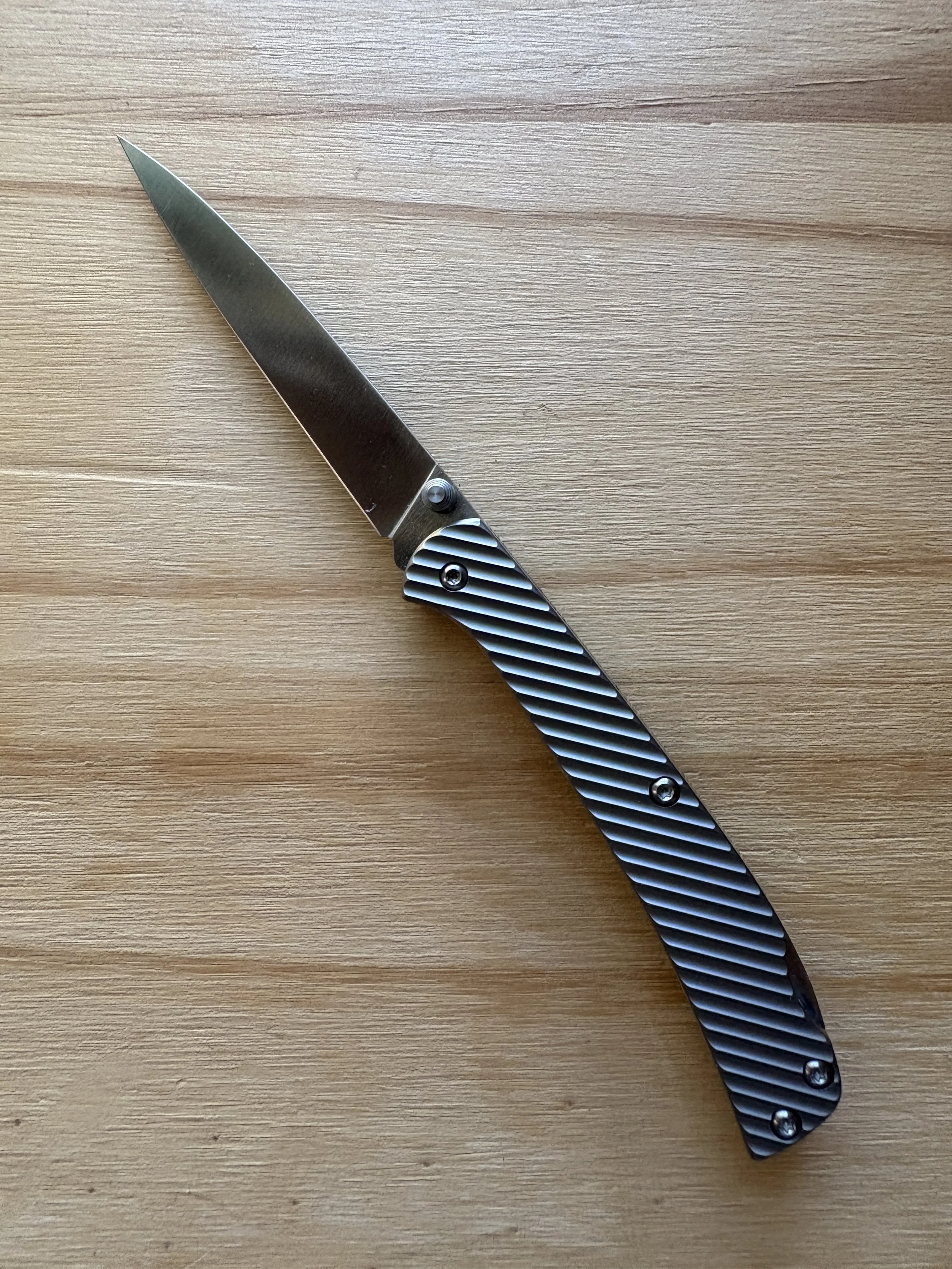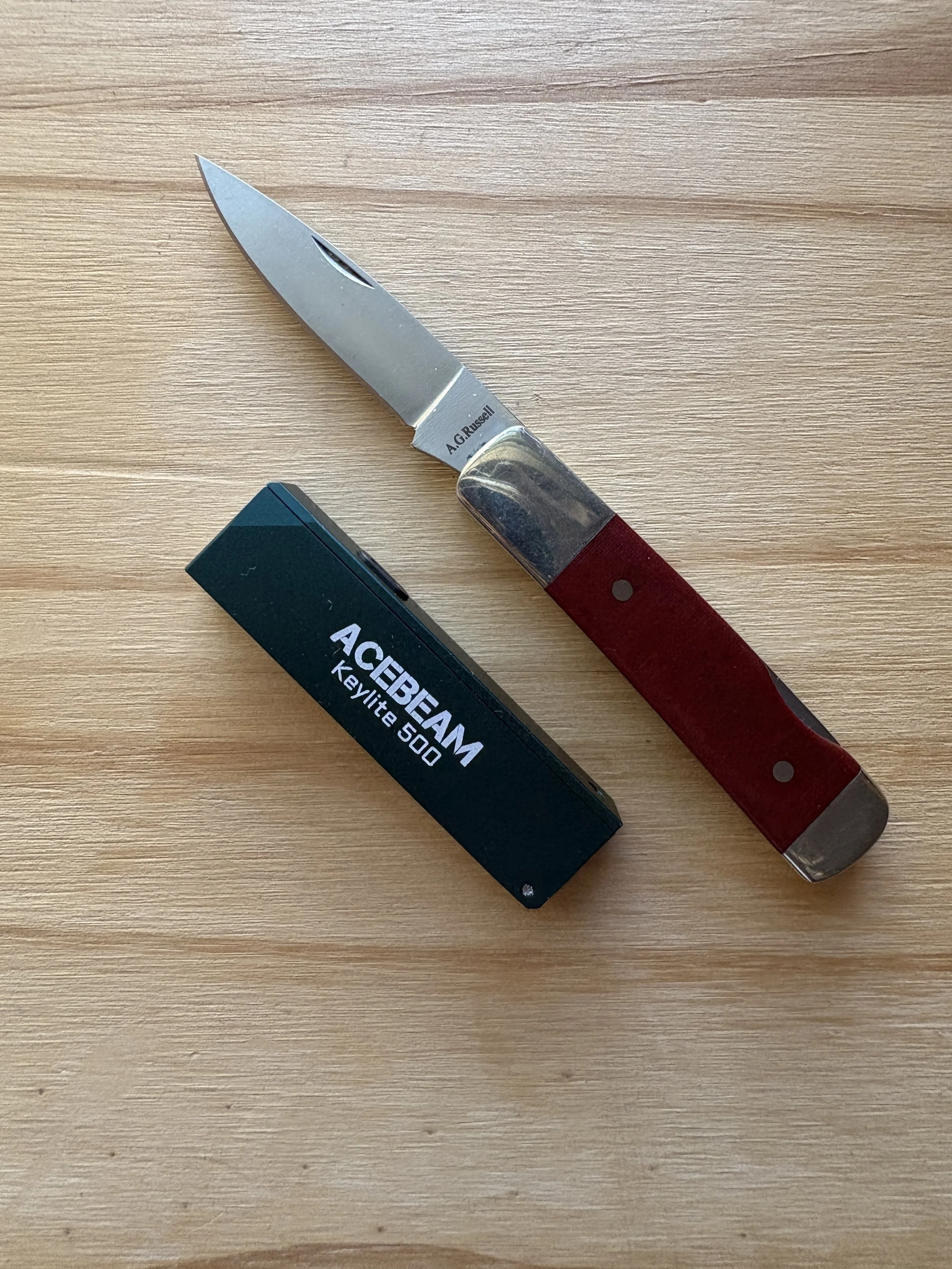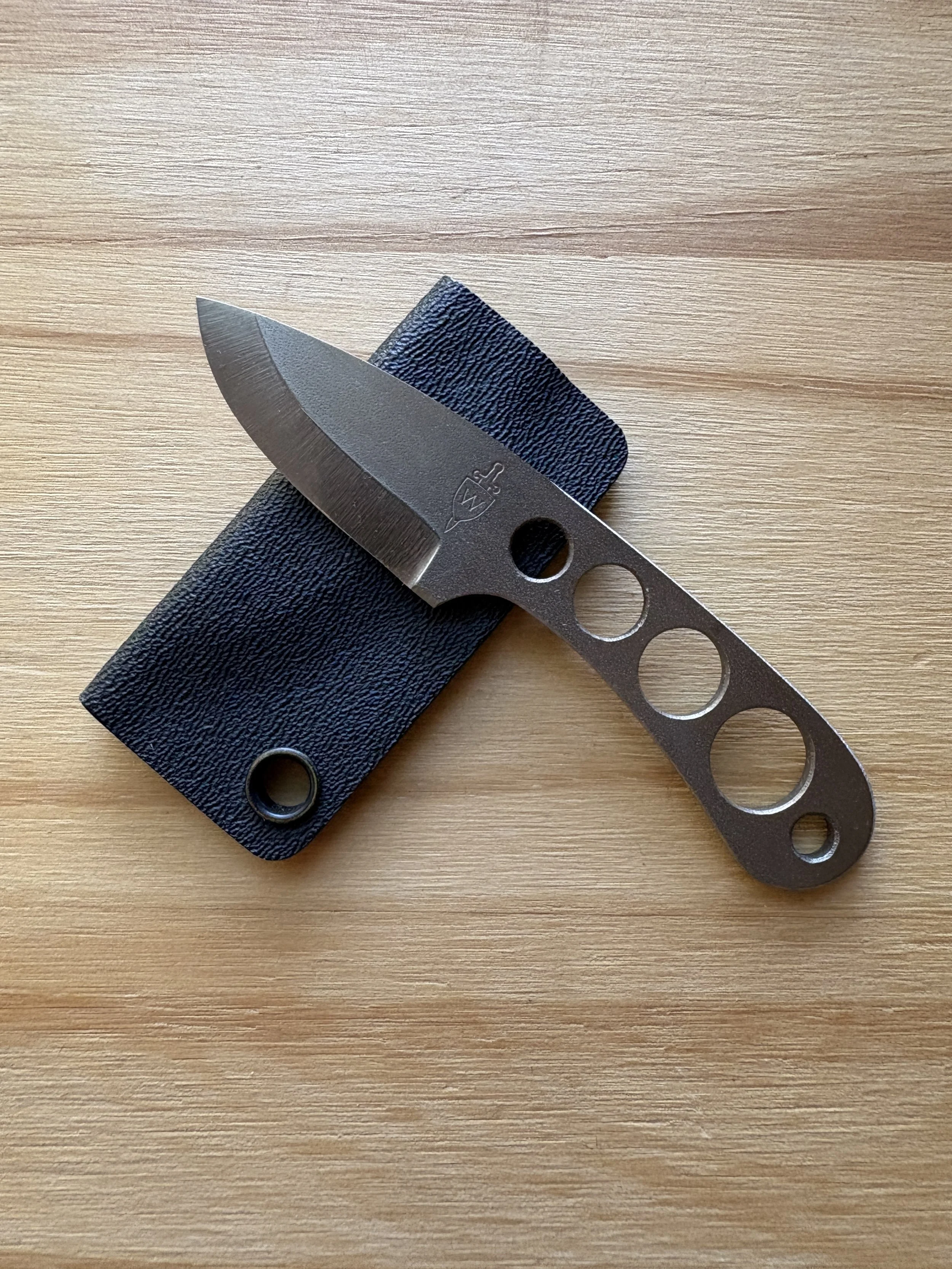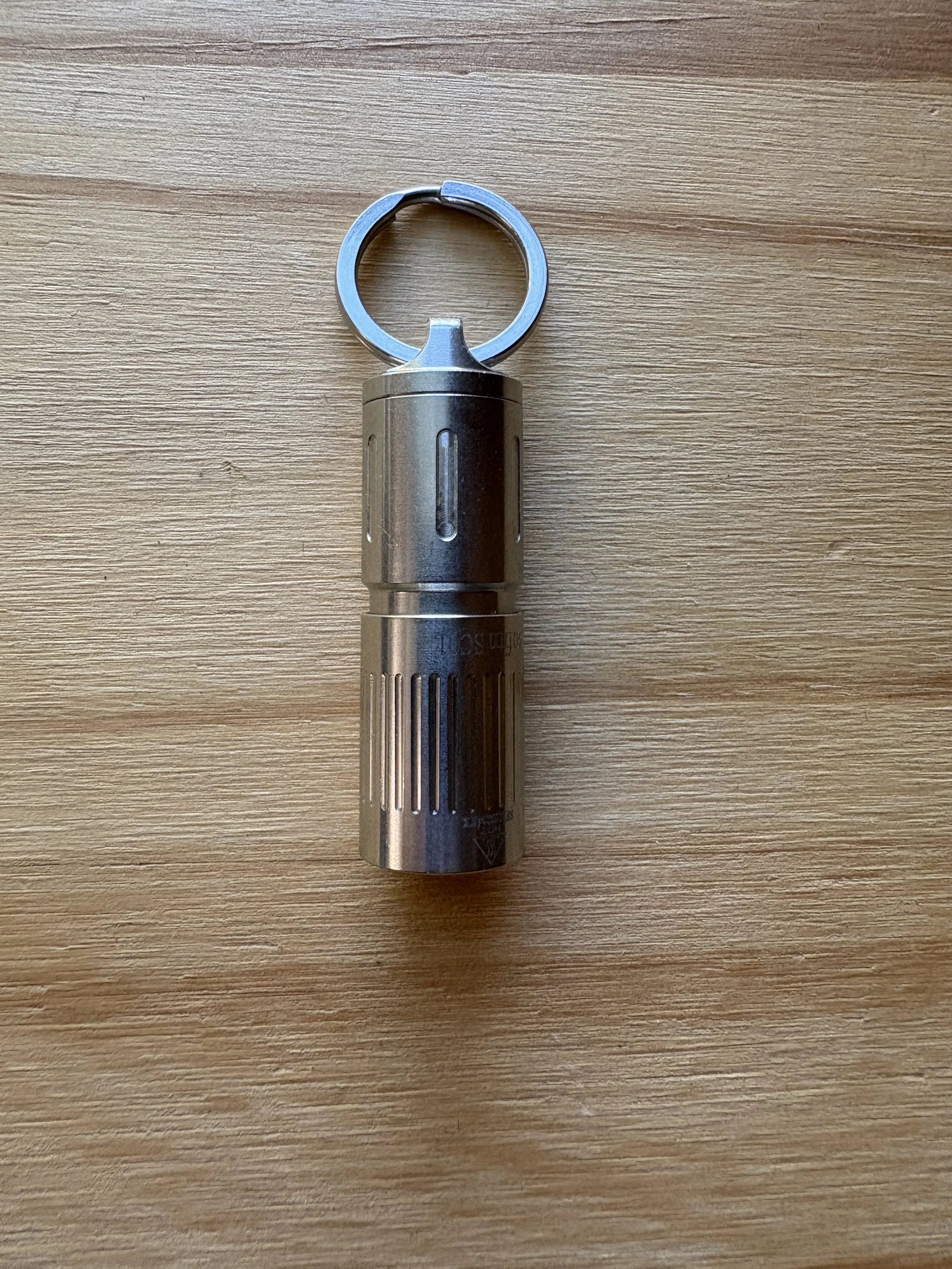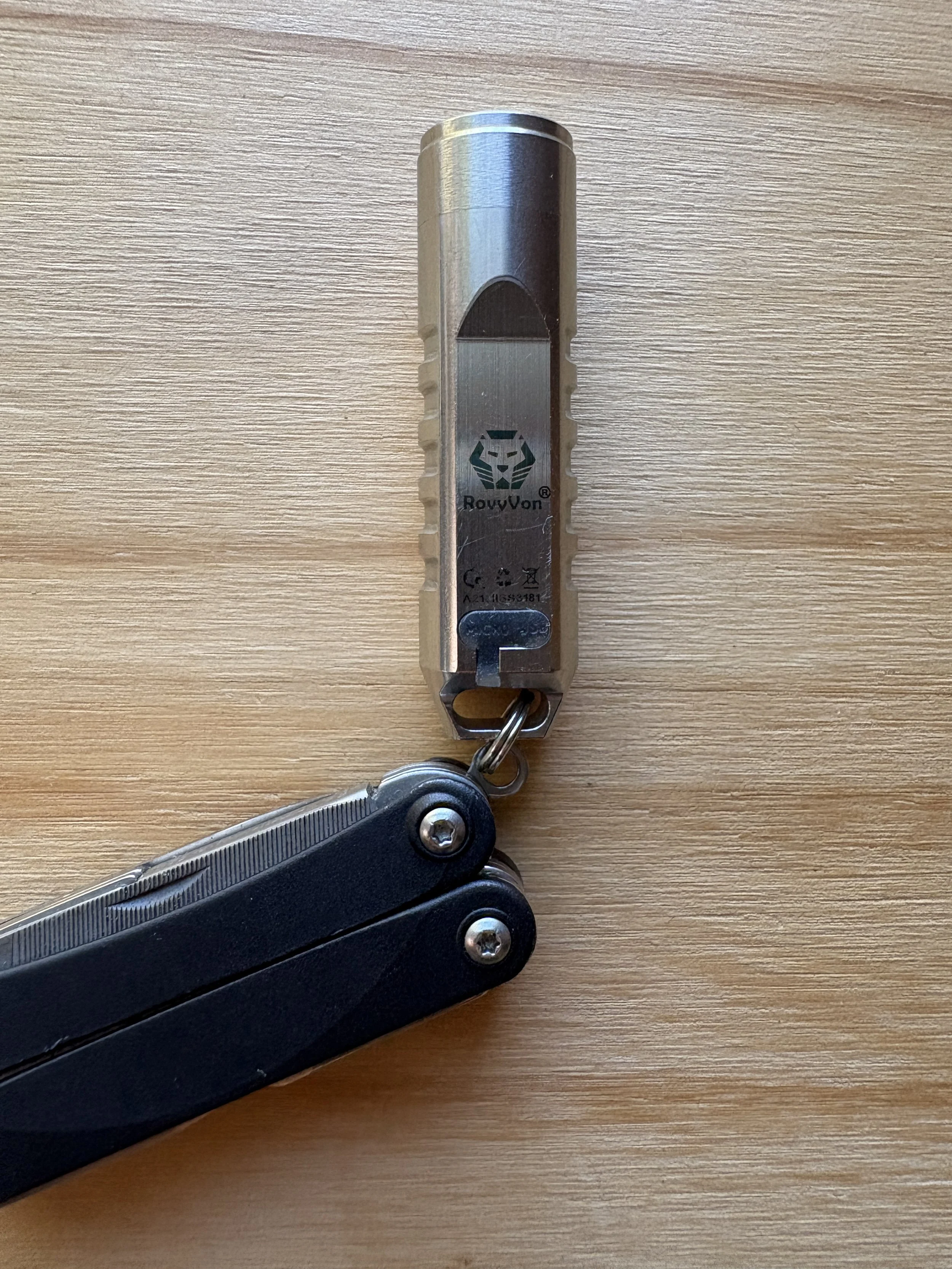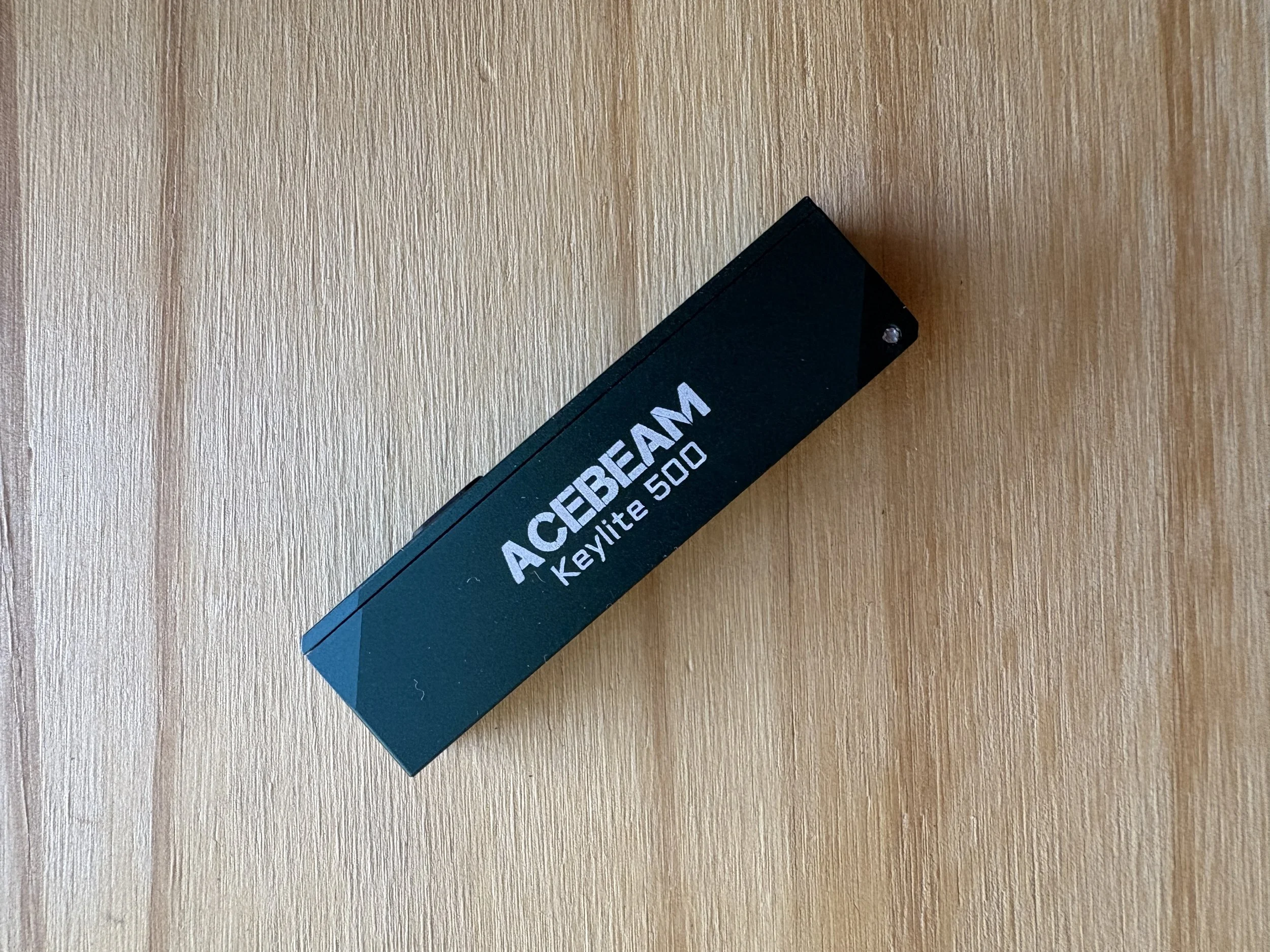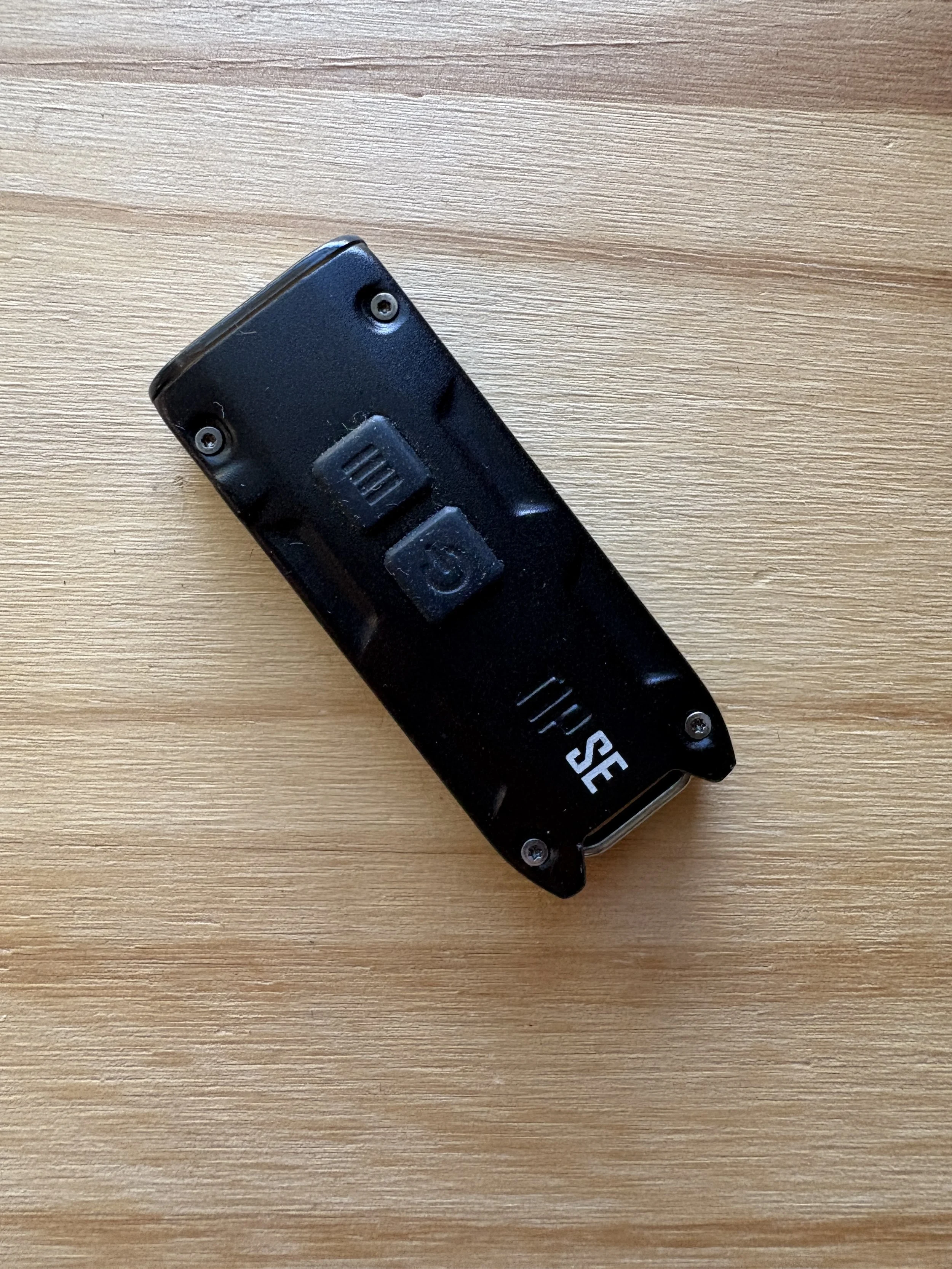Ultralight Light and Saber
We here in the gear community pride ourselves are carefully curated carry. We also don’t really care all that much about what we look like, how expensive our gear is, and how niche something might be. But we look like total normies compared to the stark and nutty weirdos that do ultralight backpacking. For the record, I am having a little fun poking at another niche interest. Who am I to judge people that obsess over gear? I am the stark and nutty weirdo that has written a gear blog for 15 years.
UL folks are people that truly care about gear, but really they enjoy suffering most of all. UL is to gear what BDSM is to sex. They will do anything to get the carry weight super low. There are whole camping trip lists under 2 kilograms. One thing that I noticed is that none of the load out lists online don’t include…um…soap or deodorant. If it weren’t for the prices for gear, I would think that the UL folks are actually high functioning hobos. Weirdness abounds in the UL community. A load out that is measured in grams? Oh yeah. A handle-less trowel for digging holes to bury poop? Yep. If anything makes you want a toothbrush handle, regardless of added weight, it is a handle-less poop trowel. Something call wind pants (is that like parachute pants, I remember those from the 80s)? Sure, why not?
Now, a lot of these lists leave much to be desired in terms of bladed tools and lights. Some use a razor blade tucked or folded into some kind of plastic or cardboard around the edge. Others use ultralight scissors, like these cute but likely useless cutters. The mini scissors weigh something like .16 ounces (and yes, I am going to use ounces European friends). They also are especially lacking when it comes to lights. At some point, I am not sure if they are trolling or joking with each other.
So here is the conceit of this article—as a light and knife guy what would I recommend to an ultralight backpacker? I do not know the rules, customs, or norms for this niche interest. I am not, for example going to tell you how to create a light with a straw and an LED, see here if you want that silliness. Instead of making this a challenge of how can you do something poorly with barely nothing, I just want to highlight durable, light, easy to use stuff. Of course, if you are into ultralight durable and easy to use are sort of antithetical to your mantra. Instead you’d prefer to through hike the AT with a used garbage bag for a tent, a plastic grocery bag for a pack, and a flattened disposable water bottle. But, if you are a little tired of the gear starvation that seems to permeate this mindset, here are some recommendations for good stuff that is still pretty light.
Let’s start with parameters. First, the knife should be under 2 ounces. Compared to the silly scissors that is positively portly, but compared to most knives we are dealing with these are the featherweights of the knife world. Second, for the light we want something under that 2 ounce barrier as well. Ideally the knives would have field-serviceable steel (you definitely AIN’T carrying a strop if you are in the Cult of Handle-less Poop Trowels), but we can also go for a very high wear resistance steel and skip maintenance. For lights, I’d like something that can do a true low for good runtime or standard batteries that can be replaced by the user. And since we are decidedly anti-gear starvation I want these things to have some real performance and durability.
By field-serviceable I mean capable of being sharpened in the field. With a bit of practice you can use a flat or relatively smooth piece of sandstone can work as an impromptu field sharpener for the softer carbon steels. The non-gazed ring on the bottom of a coffee cup also works. A leather belt, which UL hobos never wear, would work as a great strop. Ben over at Knafs even sells a truly excellent pocket strop that weights next to nothing. I have done all of these things and the leather belt strop is really great. Maybe the belt is like the trekking pole that converts into a tent pole—a dual use item. And wearing a belt will prevent the appearance of the dreaded hairy buttcrack that is often found on UL folks that are bending over to tie their shoes. And yes, there is a portion of the AT that we hike. This is personal experience folks.
The Knife
There are a few really good knives under 2 ounces, but two leap to mind: the Mini Bugout and the Dragonfly 2. If you like looks go for the Bugout.
If you appreciate ergos drop cash on the Dragonfly.
Neither have steel that can be readily sharpened in the field, but they both have steel that is unlikely to need sharpening even on a week long trip. An interesting thing has happened with the Bugout—there are four different handle materials—Grivory, CF Elite, Aluminum, and CF (in the S90V edition). The CF Elite version is the lightest at 1.5 ounces, while the Grivory hits 1.51 ounces. The CF version is 1.62 ounces and costs $300. All but the CF version runs S30V steel, which, if I had by druthers, I would never have on a knife again. It is a good combination of stainlessness and wear resistance, but it is very difficult to get good results with when sharpening. That is a real strike against the MBO. I would much prefer S35VN, which is roughly the same price. DF2 is even lighter than the MBO at 1.2-1.3 ounces. The lightest configuration there is the wharncliffe version with FRN handles at 1.2 ounces. This version runs K390 so it will get a little smudged, but it won’t need sharpening for two weeks.
If you want to go even smaller, which I think can work, the Spyderco Jester in FRN is the best knife in either company’s ultra small line up. At .6 ounces, the Knife Joker exclusive sports GITD handles and 20CV steel, which, again, will not need servicing for a while. This knife is OOP and quite collectible, so it is going to be expensive. Then again UL folks regularly pay for CF tent stakes, so they won’t mind. The Perrin-designed Subway Bowie is also very good, but it is over our 2 ounces limit at 2.3 ounces.
The ZT made, Tim Gaylean designed ZT0022 does weigh 1.7 ounces, so it technically makes the cut. I think it is an ergonomic car crash and pretty expensive, so I would opt for a Dragonfly instead, but it does fit. The CRKT Halligan KISS is over the 2 ounce limit but the CRKT website exclusive CEO isn’t. At 1.7 ounces, it features an S35VN blade and costs $99. It is a truly excellent knife with a real and useful size and blade. The Q Compact Liner Lock is the most full sized knife so far listed but it comes in exactly at 2 ounces. It’s a gorgeous piece and costs $200. The CRKT Minimalist fixed blade is a possible option at 1.8 ounces. That said, I do not like the finger scallops on the handle or the truly awful 5Cr steel. I’d skip this thing.
Kershaw, Cold Steel, and others do make knives this light, but a lot of them have inferior Chinese steels in the Cr series. I have found these steels to be too hard to field sharpen but not hard enough to cut forever. Skip all these knives.
There are three companies make knives that fit—Victorinox, Opinel, and Gerber. Victorinox’s entire 58mm line up, except for the Mini Champ, would work. The Classic has a file, pen blade, scissors, toothpick, and tweezers for .7 ounces and $24. The Rambler adds a driver/opener and weighs 1.06 ounces. I would also consider the Bantam. The standard celluloid handles weighs 1.2 ounces and comes in around $22, while the Alox version loses the scale tools and comes in at 1 ounce and costs around $35. This is a real knife though, not a mini-sized wimp. It, like the Mini Bugout and Dragonfly, can do some real work. And while a lot of UL folks like scissors, I have found that a little practice and skill building can make a knife the more versatile tool. Opinel’s entire line is superlight. The No.3 is probably the best mix of good size and low weight with a 1.68 inch blade and a weight of .23 ounces. It is also $11. The steel is a carbon steel that is definitely user-serviceable in the field.
Gerber makes a series of very small, very light, and very simple knives called the LST series. The LST is actually not bad, which is above average for a Gerber. It’s about as simple as a knife gets and sports a field serviceable steel—420HC. It is $26 and weighs 1 ounce. There is a version with a clip called the LST Ultra, but it runs the same steel, is coated (which is pointless on a steel this corrosion resistant), and it is almost twice as much. That’s a skip. The other new version of the LST is the LST II which is even lighter at .5 ounces and comes in at $16. This seems like the best of the LST series for this purpose. Technically the Assert is also under 2 ounces, so that is worth a look. I dislike the S30V steel for the same reason I mentioned above with the Mini Bugout.
There are some really good choices from less mainstream brands. The MBK Tusk is excellent.
Modeled after an Al Mar, the knife is all titanium and steel. It has a clip and snappy deployment. It costs $100 but runs S90V blade steel, which is, by far, the best steel on a knife so far and certainly capable of going weeks without sharpening. It tips the scale at 1.4 ounces. There are quite a few traditional knives out there that fall into this category, but I would avoid Case Knives as they have spotty fit and finish. The AG Russell Gent’s Lockback is an extraordinary traditional with Elmax steel and a simple but beautiful design.
In Coral Rucarta it weighs 1.2 ounces and costs $125. It is a very well made knife. Pepperwool, a new brand from a former SOG Knives designer, sent me the Merino and it is quite nice. It weighs 1.6 ounces, has an S35VN blade steel that won’t need sharpening, and costs $130. If you can find it the old raptor series of knives from Al Mar in the original Micarta handles are resplendent. They run AUS-8 steel which is in the uncanny valley of steel—too hard to field sharpen and too soft to use for a long time. But they are really splendid knives. The modern version, which sports D2, has the same steel problem, but does meet the weight requirement. Tactile Turn is releasing a G10 Bexar that weighs a paltry 1.2 ounces. It has Magnacut steel, so you don’t have to worry about an edge or rust for weeks.
As I was working on this article, I remembered that class of ultra small custom knives. The Ver Steeg Imp is one of the my oldest knives and it is a killer piece of kit with no real production equivalent. It weights around 1.1 ounces. That’s not bad, but probably heavier than UL folks would like. I have an even lighter pick in the form of the Wegner Aphid II.
It weighs .96 ounces (26 grams) with the sheath. Given that the Imp has long, long been out of production the Aphid II which comes in and out of production as its maker, Dave Wegner, wants, is a good choice. He also sells a similar sized knife with a more complex handle called the Aphid I. This isn’t the lightest knife out there, but the size is super compact and slim and there is one other thing—in more than 15 years of the site and after handling probably 10,000 different blades, nothing comes close to the out-of-box sharpness that you find on the Aphid II. It is a positively hair popping sharp little knife, letting it plow through tasks most knives can’t handle, even with its small profile.
So with all these choices what would I pick? I’d probably opt for either the Opinel No.3, the Jester, or DF2 in 20CV, or the MBK Tusk. Since the Opinel is at worst 1/10th the price of the other three, go with that. Just don’t get the handle wet or really sweaty. It’s wood and if it swells the blade doesn’t fit. If you can afford more weight and money, the DF2, a knife I don’t talk about much, is also a very good choice.
The Light
Lights are much, much harder to make work. There is a problem with lights that have user swappable batteries—no matter what you do the battery weighs a lot. An AAA weighs .27 grams (11 or 12 grams depending on the cell’s branding wrapper), an AA weighs .8 ounces (23 or 24 grams depending wrapper), and a CR123a weighs .58 ounces (16-17 grams). You might have noticed that the CR123a is significantly lighter. That’s because alkalines are heavier than lithiums. For example, an AAA in lithium weighs .25 grams. Generally lithiums are about 33% lighter than alkalines. Nothing you can do will drop a light below those numbers, so I think we should just rule out lights with batteries bigger than those and lights that run on alkalines only. I’d drop all user swappable batteries other than the AAAs.
There are some super dainty AAA lights. The Emisar KC1 is a really impressive little light. It is dual fuel, so it can run alkalines or lithium rechargeables. It is very small and very light, coming in at .47 ounces (12.7 grams). With a lithium rechargeable you get a like that is .72 grams. And here is the kicker, the light outputs 400 lumens with a lithium and it costs a whopping $13. Nothing is coming closing to that, with a bunch of ultralight keychain lights out there not being dual fuel. Why does dual fuel matter for ultralight folks? First, you get the benefit of the lighter battery chemistry. Second, if you are on a thru hike of the AT, you can always buy the heavier alkaline batteries just about anywhere. Performance dips, but some light is better than no light. If you need a clip there is always the Eagle Tac D25AAA. Its more money at around $30 and weighs a smidge less. Its high is only 100 lumens or so, which is noticeably less than the KC1. If you like a magnet, I’d go with the D25AAA. If you want a real high, I’d go with the KC1.
There are smaller user swappable batteries. A 10180 is about the same diameter as a AAA but is half as long. I have a Lumintop Frog and the Sofrin SC01.
Both are excellent. Be aware though—there is no dual fuel ability as these batteries don’t really get sold in stores. You can charge a few and bring them with you, but you can’t buy them in person really. At .12 ounces or 3.5 grams, they don’t take up much weight. The Sofrin is not consistently available, but its twist and twist more UI is better than the Frog’s side clicky. Both are pretty cheap, $15-30, and pretty bright.
If you go with built in batteries you can get a ton of options the RovyVon Aurora series is great. The A1 with a poly body weighs .59 ounces or 16.8 grams. There are dozens of variants with poly and metal bodies. They get heavier and more expensive beyond the A1.
They all use USB-C chargers (mine is an older model that uses a Micro-USB). The AceBeam Keylite 500 is another really great choice.
It weighs .67 ounces or 19 grams. And it is TINY. Both the Aurora and the Keylite hit 600 lumens for a few seconds and then drop down. Both also have a true low. The “fat man” among these kyechain lights is the Nitecore TIP SE.
It has two buttons and an easy UI, but it is portly at nearly 1 ounce (.92 oz or 26g). There are dozens of these built in battery lights and they all have similar specs. I’d opt for USB-C charging and check for true single digit lows. The highs don’t really matter.
There is one last approach that might work—a headlamp flashlight combo. This light set up involves a right angle flashlight that can be held in some kind of bracket on a headband. This adds a lot of weight, the bracket and headband are always at least an ounce. The problem is that the ideal configuration has a lot of requirements. It needs to have: 1) 1xAAA with dual fuel; 2) be very light; and 3) be headband compatible. The only light that I could find that meets all of these criteria is the .75 ounce Manker E02 II. Note that this does not include: 1) the battery or 2) the headband and bracket. At $23 it isn’t too expensive and on high it hits 400 lumens with a runtime in days on low (5 lumens). There are not a lot of choices, but this one seems to fit the bill. I am not a fan of headlamps, but this one seems compelling, if you can tolerate the extra…gasp…2 ounces for the battery and headband. And they do make UL headbands—they are basically thin rubber tubes that go around your head instead of the elastic sweatband.
Forced to pick I’d go with the KC1. Perhaps I am an old curmudgeon, but I can’t quite go full built-in battery yet. Maybe soon, but not yet.
The KC1 and the Opinel will clock in at a tubby for UL folks 1.05 ounces and like $24. That seems like a good trade off for the performance and price. My preferred UL set up is the Jester and the Frog at 1.10 ounces and a ridiculous amount of money because the Jester currently runs about $250 on eBay or Arizona Custom Knives in the very rare instance they come up for sale. The last one I could find was on ACK and sold in July of 2024. With my titanium split ring from County Com, the package weighs 1.16 ounces or 33 grams. The UL suffering mentality means you have to pick the KC1 and Opinel, so that it can rain and swell the wood handles until they render the knife useless. Then you can create a makeshift set up where you have a rubber band hold the knife edge in the blade well and pretend you MacGuyvered a fix.
Amazon Links

